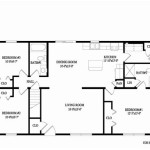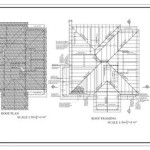Building a house out of straw bales can be a cost-effective and sustainable way to create a home. Straw bale houses are energy-efficient, fire-resistant, and eco-friendly. Plus, they can be designed to fit any size or style of home. This guide will cover the basics of straw bale house plans and provide tips on how to create a successful design.
What Are Straw Bale Houses?
Straw bale houses are homes that are built with bales of straw as insulation. They are becoming increasingly popular due to their eco-friendly nature, high level of insulation, and fire-resistant properties. Straw bale houses can be built in any climate and in any size, from small cabins to large homes.
Advantages of Straw Bale Houses
Straw bale houses offer many advantages over traditional homes. They are energy-efficient, cost-effective, and sustainable. Additionally, straw bale houses are fire-resistant, soundproof, and provide excellent insulation. They are also aesthetically pleasing and can be designed to fit any style of home.
The Basics of Straw Bale House Plans
When planning a straw bale house, there are several factors to consider. These include the size and layout of the house, the type of straw bales to be used, and the type of foundation. Additionally, the climate, soil type, and location should be taken into account when designing a straw bale house plan.
Tips for Designing a Straw Bale House Plan
- Create a detailed plan that takes into account all of the factors mentioned above.
- Incorporate passive solar design elements, such as south-facing windows, to increase energy efficiency.
- Consider the use of natural ventilation, such as wind towers, to reduce the need for air conditioning.
- Incorporate landscaping elements, such as trees and shrubs, to reduce the need for artificial cooling.
- Choose a design that is compatible with the local climate, soil type, and location.
Conclusion
Straw bale houses are an environmentally friendly, cost-effective, and sustainable alternative to traditional homes. Designing a straw bale house plan requires careful consideration of the size and layout of the house, the type of straw bales to be used, the type of foundation, and the local climate, soil type, and location. By following these tips, homeowners can create a successful straw bale house plan that meets their needs.















Related Posts








